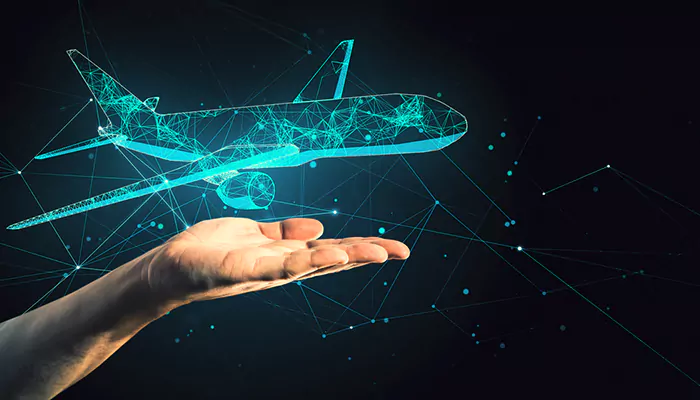
Flying into the future: innovations transforming aviation in India
In the past few years, fast technological progress has caused the Indian aviation business to change in amazing ways. New technologies have changed many parts of how airlines work, from making them safer and more efficient to making the experience of passengers better.
The widespread use of aircraft connectivity and data analytics solutions is one of the most important technology advances in Indian airline operations. Modern planes have high-tech sensors and communication systems that let important things like engine performance, fuel economy, and the health of the plane be monitored in real time. These systems send information to operations centres on the ground. There, advanced analytics tools look at the data to find patterns, predict maintenance problems, and improve flight operations.
Digital technologies help airlines and airports handle tasks like check-in, boarding, handling bags, and turning around planes, which speeds up passenger flow and cuts down on wait times. Mobile check-in apps, self-service kiosks, and biometric authentication systems make it easy for travellers to move around airport terminals. This cuts down on wait times and improves the entire travel experience. Digital options for tracking and handling bags also make the process more accurate and clear, which lowers the chance that bags will be handled incorrectly.
Automatic Dependent Surveillance-Broadcast (ADS-B), Collaborative Decision Making (CDM), and Performance-Based Navigation (PBN) are some of the technologies that make it easier to control airspace and plan routes more accurately. These advanced ATM systems make it easier for planes to fly, use less fuel, and have less of an effect on the world. Indian planes can improve on-time performance, avoid airspace congestion, and optimise flight paths by using real-time data and predictive analytics. This saves money and makes operations more efficient.
Indian airlines have started using augmented reality (AR) and virtual reality (VR) to improve the training they give to pilots, flight attendants, and maintenance workers. AR and VR simulations offer immersive training experiences that let students practise emergency procedures, cockpit operations, and repair tasks on aeroplanes in a virtual world that feels real. These new ways of training help people remember what they've learned, become more aware of their surroundings, and learn skills more quickly and easily.
The experience of flying with Indian airlines has also changed because of new technologies, with a focus on personalisation, connection, and entertainment. Wi-Fi connections in the air let people stay in touch and get work done, and entertainment systems on board provide a variety of multimedia material for passengers to enjoy. Additionally, Indian airlines are looking into how to combine biometric identification and face recognition technologies to make the boarding process faster and safer. Airlines can make services and products more appealing to each customer by using passenger data and predictive analytics.
Advances in technology are causing Indian planes to change and innovate in ways that have never been seen before. This makes operations safer, more efficient, and more seamless. These new technologies are changing the future of aviation in India. They include connecting planes and analysing data, as well as digitising na operations on the ground and creating the next generation of air traffic control systems.